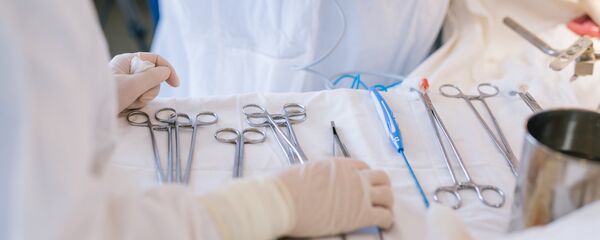Two years ago, when Professor Canavero first announced his project to the world, the scientific community regarded his theories with skepticism. However, thousands of medical researchers and doctors around the globe became fascinated by the neurosurgeon’s ambition, and now it appears that Project Heaven may finally become reality.
The surgery is expected to be conducted in China by a team of surgeons led by Dr Xiaoping Ren, whom Professor Canavero will be assisting.
It should also be noted that since the project is bankrolled by the Chinese government, the surgery will be conducted on a Chinese national, whose identity hasn’t yet been disclosed, and not on Russian volunteer Valery Spiridonov as it was originally intended.
As Canavero explained to Sputnik Italia, his team published their proof of principle research, conducted in collaboration with Rice University, last September.
"Our research confirmed that the mice that had their spinal cords severed just like during head transplantation regained their ability to move. Thanks to an advanced type of polyethylene glycol (PEG) used during such surgery, the area where the cut was made regains the ability to conduct neural impulses within 24 hours. A dog that got its spinal cord cut and then restored using PEG was able to run within three weeks of the surgery," he said.
According to Canavero, back then his critics argued that this early research did not provide enough statistical data, and that it was necessary to prove that new nerve fibers formed at the area where the spinal cord was cut.

In order to address these concerns, in January Canavero’s team published new research which involved the immunohistochemistry process.
"In order to accumulate enough statistical data we used large rats as test subjects, employing the diffusion tensor imaging which allows for the examining of a test animal’s nerve fibers without necessitating the prior euthanization of the creature. The test animals were divided into two groups: we used a placebo during surgery on rats from group one, and PEG with rats from group two. A month after the surgery, the rats from group two could move while the rats from group one couldn’t. Later we repeated this experiment on dogs and achieved similar results. Therefore, we can now say that mice, rats and dogs that had their spinal cords cut can regain the ability to move," Dr. Canavero explained.
He also confirmed that the Chinese government insisted on a Chinese surgeon taking charge of the head transplantation procedure, so in April Canavero announced that he’ll be assisting Dr Xiaoping Ren during this historic surgery.
"There’s not much time left, and in October you’ll learn some sensational news," Professor Canavero said.


